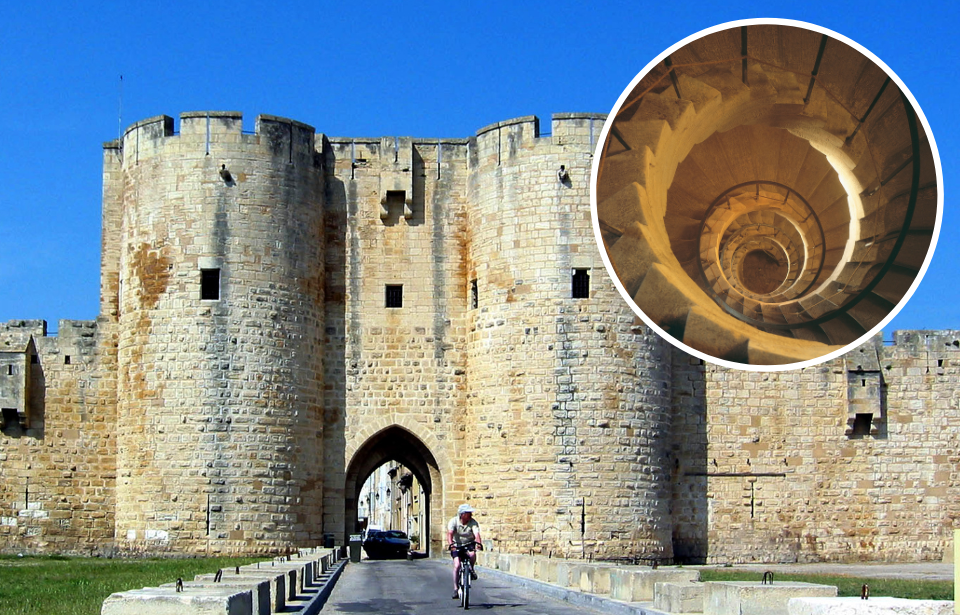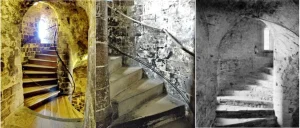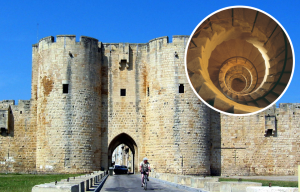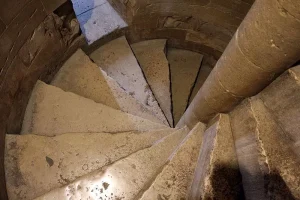“Strategic Defense: The Ingenious Design of Spiral Staircases in Medieval Castles”

Medieval castles were strategically designed not only to provide shelter and living spaces for nobility but also to offer maximum defense against invasions. One of the key features in castle architecture that served a defensive purpose was the design of the stairs, particularly those leading to towers, battlements, and other crucial areas of the castle. These stairs were built narrow, steep, and spiraling in a clockwise direction for a specific reason: to hinder attacking soldiers and give defenders a distinct advantage.

The clockwise spiral direction of these stairs was designed with the assumption that most soldiers were right-handed. When an invading soldier ascended the stairs, the narrow passage made it difficult for them to maneuver, and the spiral staircase forced them to fight from an awkward angle. As they moved up, their right arm, the dominant one for most soldiers, was unable to reach over the inner wall to strike, exposing their right side. This left them vulnerable to counterattacks, as their sword arm was restricted, and they could not defend themselves as effectively.

On the other hand, defenders descending the staircase had a significant advantage. Since they were going in the opposite direction—downwards—they were able to use the inner wall for support, keeping their shielded side facing outward. This allowed them to swing their weapons more freely and engage enemies with greater mobility. Their left hand, often used to support a shield, could press against the inner wall, while their right hand could wield their sword or axe in a more natural and defensive stance. This gave them an upper hand in battle, as they could strike downwards with ease while the invaders struggled to fight back from an uncomfortable position.
Additionally, the stairs were intentionally constructed with uneven and poorly lit steps. The irregularity of the steps made it difficult for invaders to maintain their footing as they ascended, further slowing their progress and increasing the risk of falling. This was particularly effective in dimly lit corridors or towers, where the lack of light made it hard to judge the stairs’ placement and created a disorienting environment for attackers. The sharp turns and steep inclines of these staircases also limited the number of soldiers who could ascend at one time, preventing large groups from rushing to the upper levels and overwhelming defenders.

This thoughtful design of the spiral staircases demonstrated how every detail of a castle’s architecture was carefully crafted with defense in mind. By controlling the flow of attackers and reducing their ability to fight effectively, these staircases were an essential part of a medieval castle’s overall defensive strategy. The architectural genius behind such designs made it much more difficult for enemies to breach the stronghold, allowing defenders to hold off invasions more successfully and gain the upper hand in close-quarter combat.